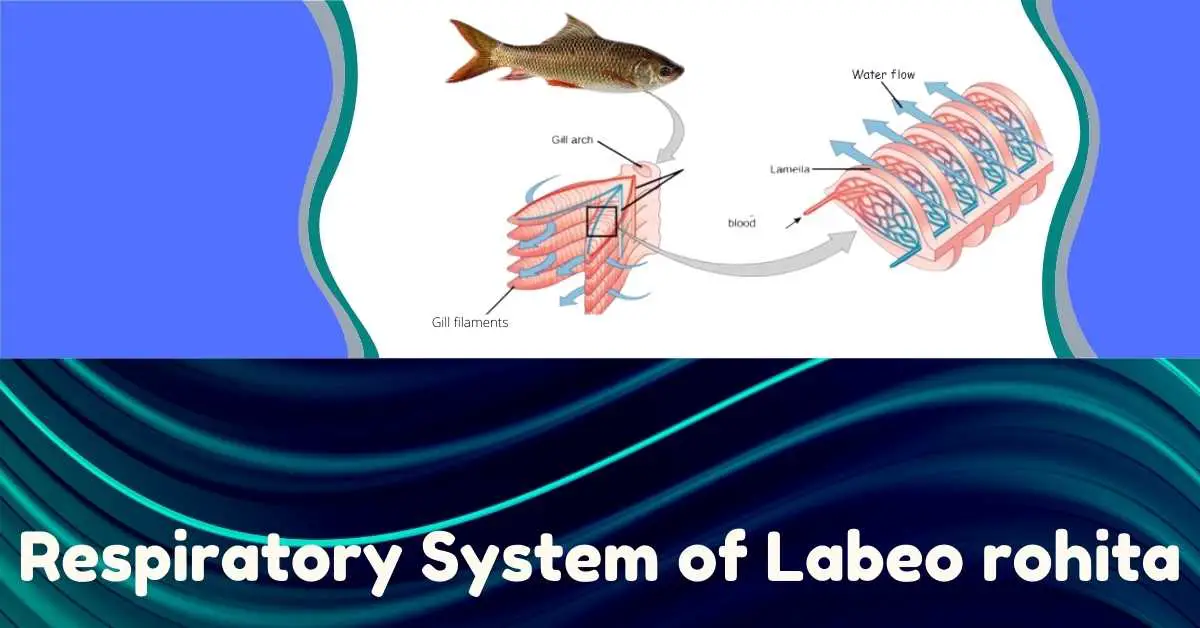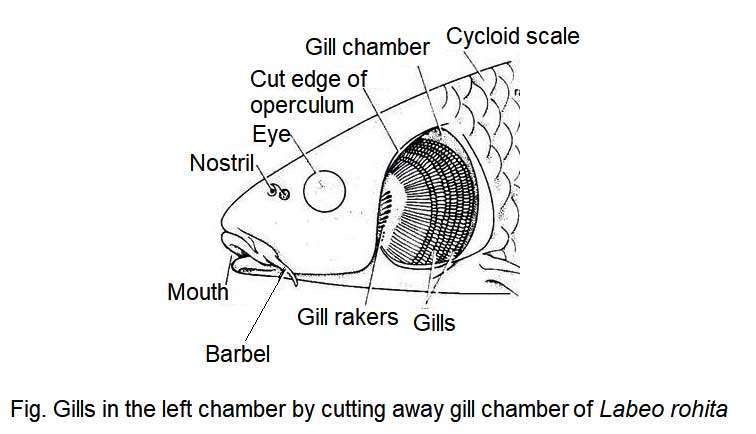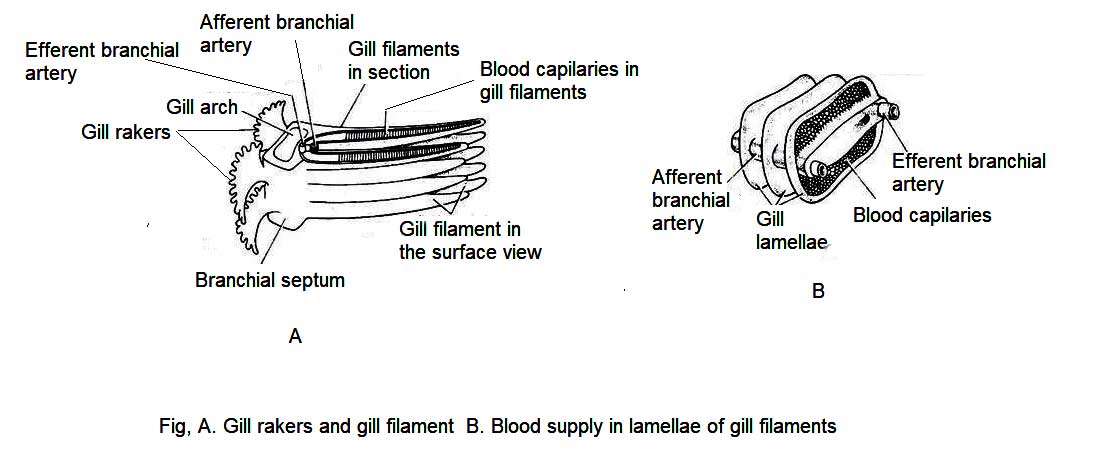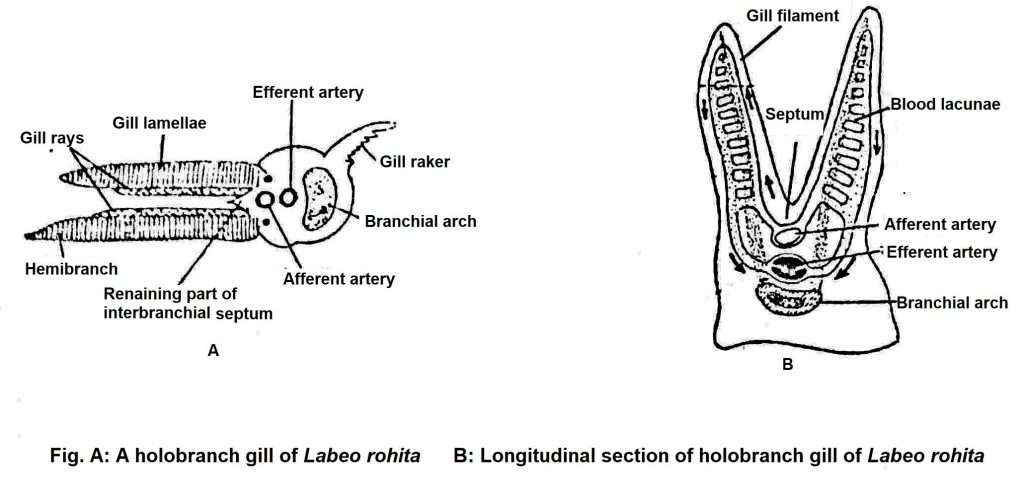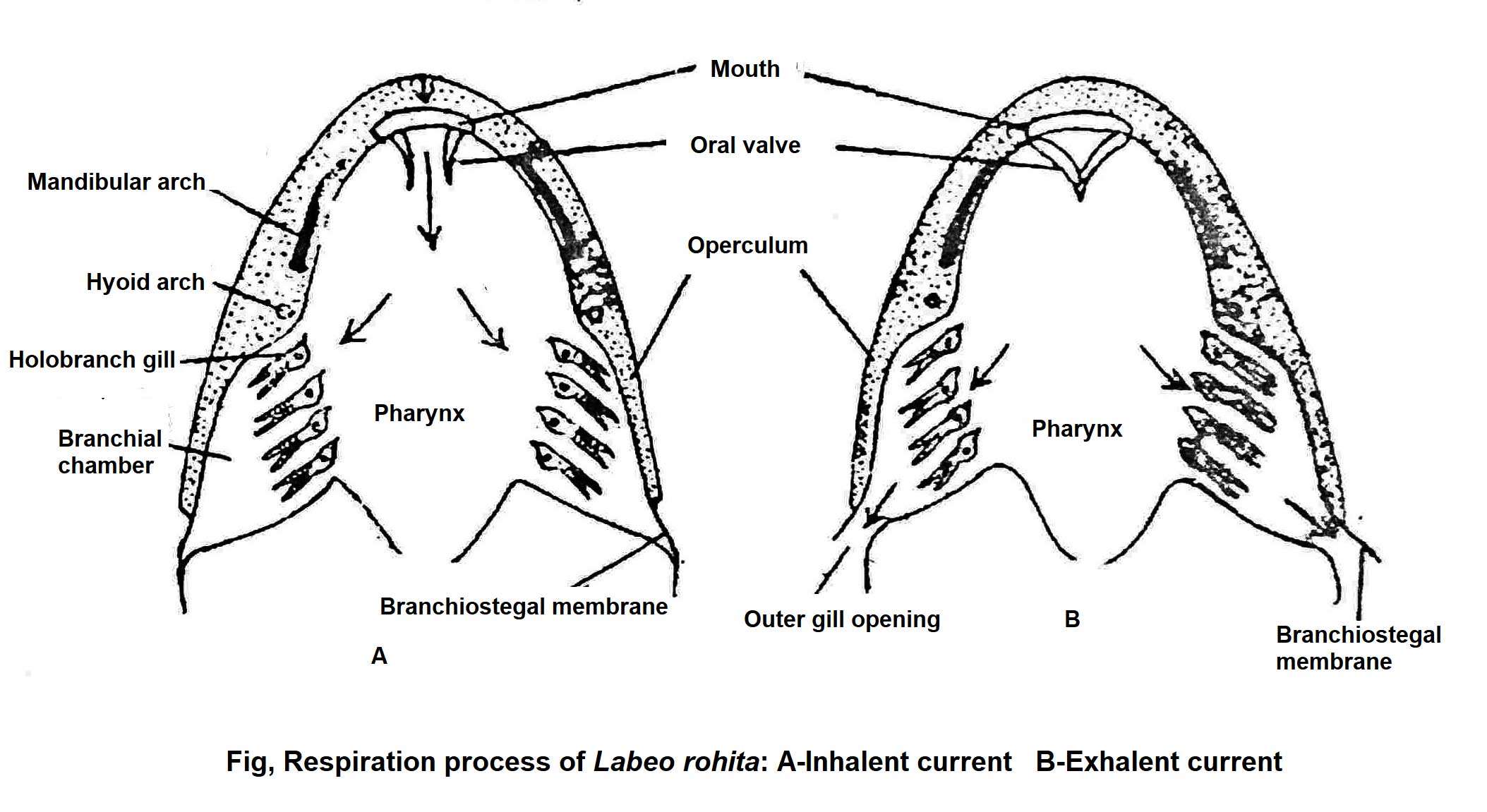Rohu fish (Labeo rohita) breathe with the help of gills. The branchial chambers on either side of the pharynx contain a total of four pairs of gills. The branchial chambers with gills are covered with operculum. The posterior end of the operculum has a branchiostegal membrane. As the membrane rises and falls, the operculum can open or close.
When the operculum is opened, the gill chamber can communicate with the external environment through the outer gill openings. The pharyngeal wall of the inner gill openings is formed by the branchial arch. The first four branchial arches on each side contain four gills. The fifth branchial arch contains no gills.
All the gills of Rohu fish are of the Holobranch type. Each gill contains two rows of gill filament or gill lamellae. One row is attached to the front end of the interbranchial septum and the other row is attached to the rear end of the interbranchial septum. A row of gill filament joins together and from Hemibranch or Demibranch. The two Hemibranchs join together and form a holobranch. The interbranchial septum between the two hemibranchs is very narrowed.
The gill ray escaping from the branchial arch divides into two hemibranchs. Each gill filament carries some small horizontally arranged plates. These plates are covered with thin epithelium. Afferent blood vessels develop on one side of the plates and efferent blood vessels on the other side.
Blood Circulation in Gills
Carbon dioxide-rich blood from the heart reaches the gills through the ventral aorta and the afferent branchial arteries. As the flows through the capillary blood vessels of gills, the blood enriches the oxygen in contact with water and leaves the gill through the efferent branchial artery. As the blood and water flow in the gills are reversed, the rate of oxygen uptake in the gills increases manifold.
From the branchial arch, comb tooth-like gill rakers emerge towards the pharyngeal cavity. Food from the pharyngeal cavity cannot enter the branchial chambers due to the presence of gill rakers.
Respiration Mechanism
The respiration of the Rohu fish is controlled by the lateral movement of the operculum. The whole process can be divided into two parts such as Inspiration and Expiration.
Inspiration
During respiration, the Rohu fish closes the external openings of gill chambers firmly. The branchiostegal membrane attached to the operculum helps to close the gill chambers. At this time, the muscles adjacent to the mouth contract. As a result, the size of the mouth cavity and pharynx increases. The oral valve of the mouth cavity opens.
Water enters the mouth cavity through the mouth opening. When the mouth openings are closed, the muscles of the ventral surface of the mouth contract. As a result, the volume of the mouth cavity decreases, and the oral cavities closes. When the pharynx and mouth cavity is filled with water, the internal water pressure increases when their muscles contract. In this condition, as the mouth and esophagus are closed, water comes in contact with the gills through the inner gill openings.
Expiration
During the flow of water by washing the gill filament, oxygen penetrates the capillary blood vessels located in the gill plate, and in turn, carbon dioxide flows out of the water and mixes with it. At this time, the branchiostegal membrane is raised and water exits the gill chamber through the outer gill opening.
Differentiation of Respiratory system in cartilaginous and bony fishes
| Cartilaginous fish |
Bony fish |
|---|---|
|
There are 5 pairs of gills on each side of the pharynx. | There are 4 pairs of gills on each side of the pharynx. |
|
The gills are exposed, the operculum is not there. |
The gills are covered with operculum. |
|
Five pairs of exterior gill openings. |
There are only two external gill openings on each side. |
|
One hemibranch and four holobranchs exist on either side of the pharynx. |
There are four gills on either side of the pharynx, they are all holobranch, hemibranch is missing. |
|
The interbranchial septum extends beyond the gill lamella. |
Decreased interbranchial septa. |
|
Gill raker does not exist. |
From the branchial arch to the pharyngeal cavity, the gill raker originates like a comb tooth. |
|
Each gill contains one efferent and two efferent arteries. |
An efferent and an afferent artery extends along the length of the branchial artery. |

